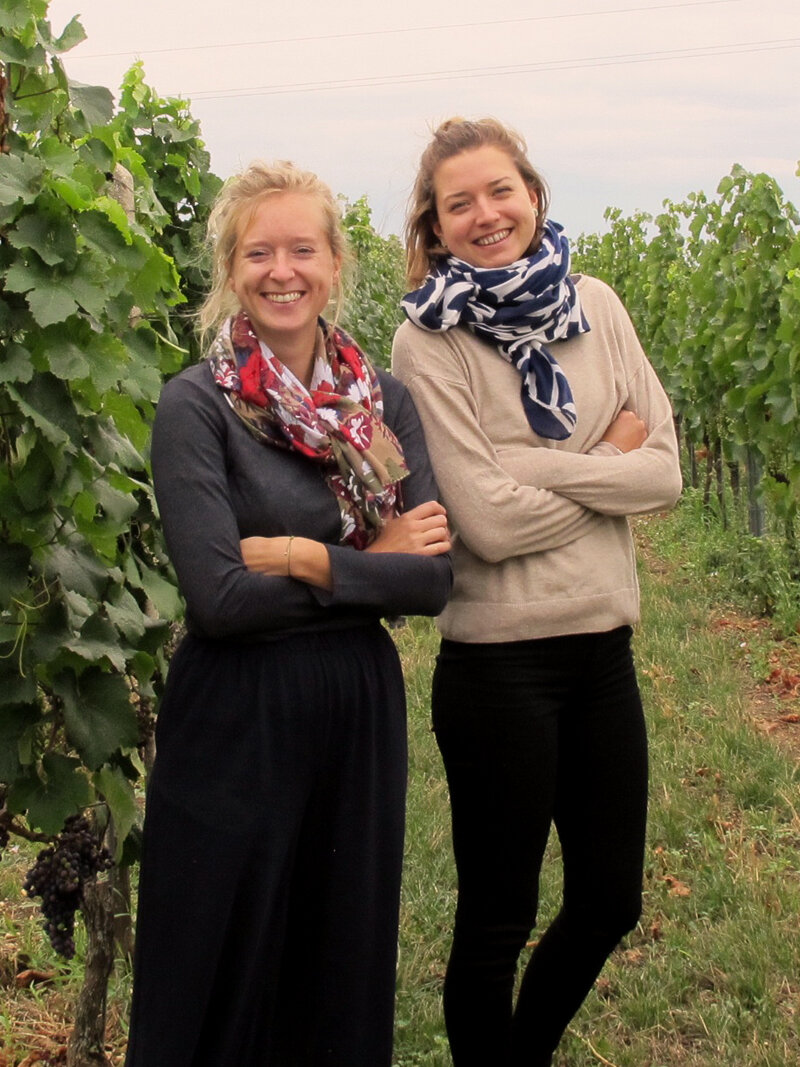I first met Susanne and Stefanie Renner in January of 2017, it was a flying visit, literally. We were in Austria just for the day with the sole purpose of visiting them in the village of Gols, a 40 minute drive from Vienna airport. Sus was astonished that someone would travel to Vienna just for the day to visit them, they had only just the year prior released their first vintage under the label Rennersistas.
Weingut Renner, established in 1961, was taken over by the sister’s parents, Helmuth and Birgit in 1988. Helmuth made good wines, but his philosophy would be considered more on the conservative side than his daughters.
Sus and Stef began working in the family business at the end of 2014. It was important for them that they set their own agenda and follow their own path, but remain respectful of their heritage and accept guidance from Helmuth. Production under the Rennersistas label began with the 2015 vintage, and just 5000 bottles were produced.
The village of Gols sits in the wine region of Neusiedlersee, Burgenland, and has a very special microclimate. Gols has Austria’s longest hours of sunlight, high humidity and moderate temperature and is influenced by the large Neusiedlersee Lake. At 315 square kilometres, this is Europe’s shallowest lake at just 1.5 meters depth, surrounded by reed beds and teeming with bird life.
The vines are all planted to trellis systems, a necessity with the humidity and winds of the area. Most of the vineyards are located on the slopes and include parcels in Altenberg, Schafleiten, Goldberg, Gebuhl and Ungerberg. The terroir’s offer a mixture of chalk, slate and loam incorporated into sandy and clay rich soils. 85% of the 12 hectares they farm is planted to red grape varieties: Zweigelt, Blaufränkisch, St Laurent and Pinot noir. The white varieties include: Weissburgunder, Welschriesling and Chardonnay.
2018 was the warmest harvest on record in Burgenland since they have been collecting weather data (approximately 250 years). With such weather extremities occurring more regularly, it solidified the decision Sus and Stef made in 2016 of planting a new 4 hectare vineyard at higher altitude. It is planted mostly to white grape varieties: Welschriesling, Gruner Veltliner Chardonnay, Grauburgunder, Muscat Ottonel and Gewurztraminer, but also with some Pinot noir and St Laurent too. The first crop from this young vineyard will be in the upcoming 2019 harvest.
The family holdings remain at 12 hectares despite this new vineyard — Sus and Stef have sold off parcels lower on the flats that they no longer wanted to work with. During the harvest of 2018 they only worked with 8 hectares of vines.
The focus is on the vineyard, which, since 2009, has been certified organic and in 2018 became certified by Demeter for Biodynamic farming. They pick early, a key factor to these wines, which express such freshness. All go through spontaneous fermentation, and sulphur additions are only added post fermentation prior to bottling, if at all. All wines are unfined and unfiltered.
The wines from the Rennersistas are a reflection of Sus and Stef, with great verve and a little bit sassy.
The Wines
In a Hell Mood Pet Nat 2018
65% St Laurent, 35% Pinot noir. 100% whole-bunch pressed, disgorged after 7 months on indigenous lees in bottle. No sulphur additions.
Waiting for Tom (Weiss) 2017 & 2018
A blend of 60% Chardonnay and 40% Weissburgunder. 65% whole-bunch pressed, 35% skin maceration for 8 days, all de-stemmed. 8 months on lees in used barriques, one 2.000l foudre and amphora. No sulphur additions.
Waiting for Tom (Rose) 2018
A blend of 75% Zweigelt and 25% Blaufränkisch. Whole-bunch directly pressed for 8 months on lees in used barriques, one 1.200l foudre and amphora. No sulphur additions.
Superglitzer 2018
45% Zweigelt, 35% St Laurent, 15% Rössler, 5% Blaufränkisch. 85% de-stemmed, skin contact between 8 and 13 days in stainless steel. The remaining 15% is whole-bunch pressed, with 8 months on lees in used barriques and 3.000l foudre. Minimal sulphur at bottling.
Waiting for Tom (Red) 2017
55% Zweigelt, 30% St Laurent and 15% Blaufränkisch. Much of the grapes for the 2017 vintage were de-stemmed, a small portion of the Zweigelt and Blau remained as whole bunches. Maceration was between 9-12 days and the wine was rested for 8 months on lees in used French and Austrian oak of varying sizes.
Welschriesling 2017
100% Welschriesling. 20% was left as whole bunches, the remaining 80 % de-stemmed. 11 days of skin contact and 8 months on lees in used French oak. No sulphur additions. Welschriesling is unrelated to German Riesling and probably originates from Northern Italy, where it is known as the Riesling Italico. This central European vine can produce some very good wine—particularly in Austria's Burgenland. It is planted widely in Friuli (Italy), Slovenia, Hungary, Romania, Albania and China. The vine ripens late to produce high-acid, gently aromatic wines.
Wssbrgndr 2017
100% Weissburgunder, de-stemmed, with skin contact for 7 days, and 8 months on lees in used French oak. No sulphur additions.
St Laurent 2017
All de-stemmed, skin maceration for 4 days, 7 months on lees in used barriques (225 and 500l). No sulphur additions.
Zweigelt 2016
100% Zweigelt, a third of the fruit is de-stemmed, two thirds carbonic maceration. 10-12 days maceration and 11 months on lees in used French oak.
BL FR NK SCH 2016
90% of this Blaufränkisch was de-stemmed whole berries, the remaining 10% were whole bunches. Maceration was over 10 days and the wine spent 11 months on lees in used French oak.


